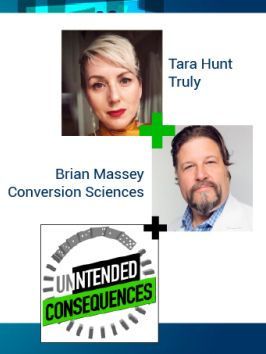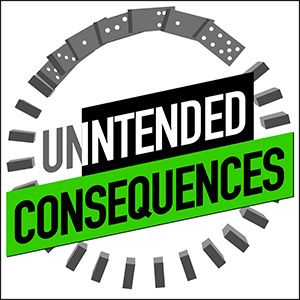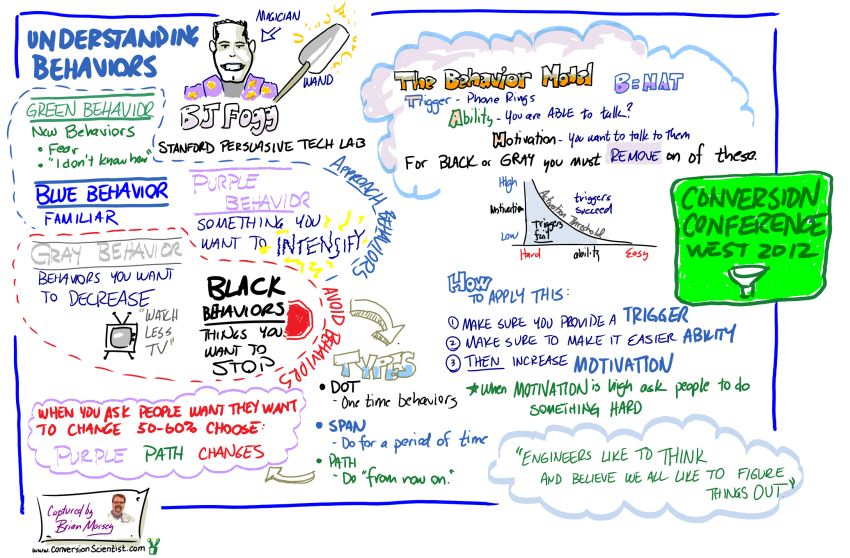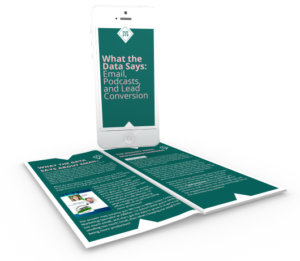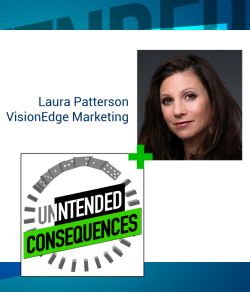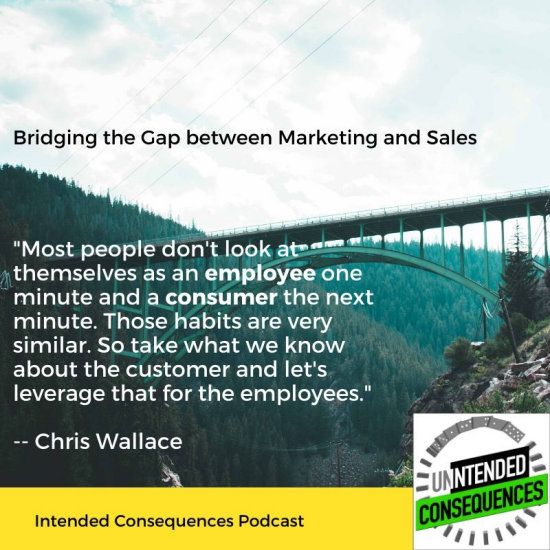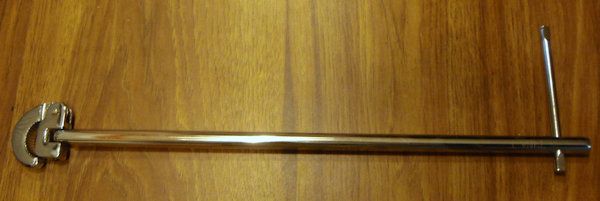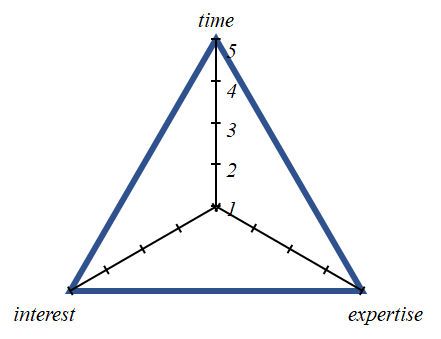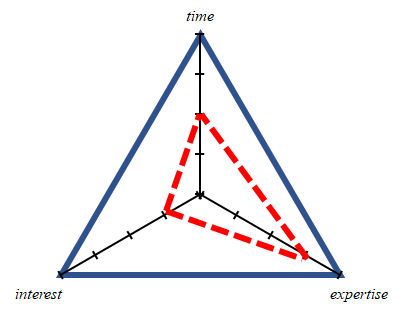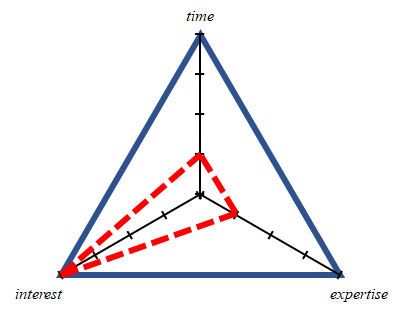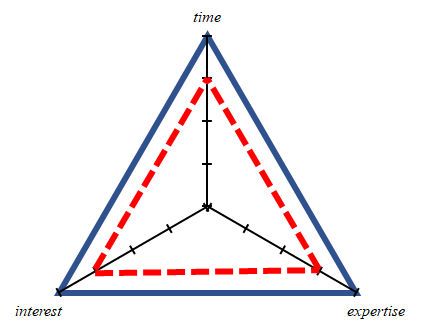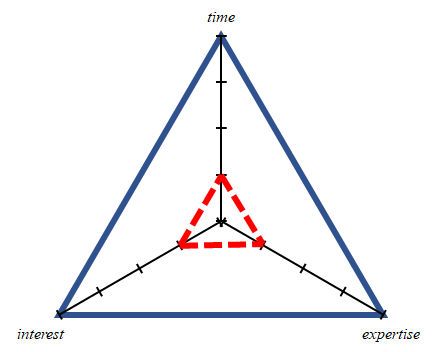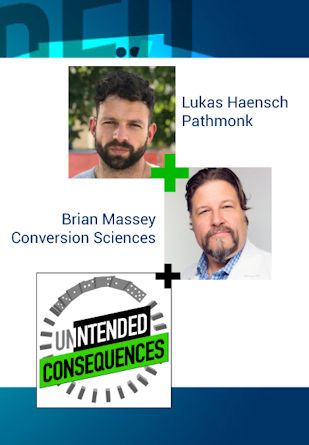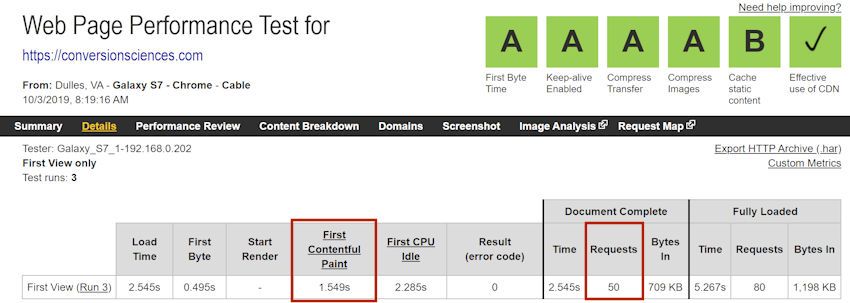| Brian Massey: |
When BJ Fogg announced that he was finally releasing a new book, I invited him to be on the Intended Consequences podcast. With few changes, what he taught us seven years earlier had changed little. His new book, Tiny Habits has turned those business management lessons into a program for individual behavior change. BJ knows behavioral design, and he clearly applies it in his life. He teaches at Stanford and he founded the Behavior Design Lab there to study human behavior. Each year, his course tackles issues big and small like peace and connecting to nature. Anyone involved in marketing is involved in what he calls behavioral design. Listen to how the science can change your behaviors and your marketing effectiveness. BJ, I’m always interested in what gets people to where they are. What is it that makes you so interested in behavioral science? |
| BJ Fogg: |
I think it goes back a long, long time. |
| Brian Massey: |
It usually does. |
| BJ Fogg: |
Just training and just a sense of responsibility for helping others, serving other people. I grew up in a religious tradition. |
| Brian Massey: |
That’s interesting. |
| BJ Fogg: |
That really was the point. I mean, we’re here on this earth to serve. Even though I’m not part of that religious tradition, that upbringing certainly is part of who I am or that sense of things. |
| Brian Massey: |
This is really a way of helping people as much as a curiosity about the science behind all of this. |
| BJ Fogg: |
Yeah, for sure. |
| Brian Massey: |
Your new book is Tiny Habits. As we were talking about, seven years ago I saw the things that are in the book in an earlier form, but they’re remarkably similar. There were two things that stuck out for me seven years ago and that was a very simple model. You did something during your presentation. You had us teach the person sitting next to us that model. I want to explore this teaching as learning thing because it seems to run through at least seven years ago to today, it seems to run through it because it is part of the book. Why don’t you start off though and give us the top level view of how we change our lives using this Tiny Habits methodology? |
| BJ Fogg: |
Okay. There’s two different paths we can go. One is down the behavior design path and talk about the behavior model, which is wow, it’s hard to believe that was seven years ago, which is what we did at the conference. The other path is this specific method that I call Tiny Habits. Tiny Habits works like this. It’s basically three hacks that you do so you can create habits easily and quickly. Number one, you take the new habit you want and you scale it way back. Say you want to drink more water. You scale it way back maybe to just pouring a glass of water. Here I’m picking up a glass of water that I poured this morning as my habit. It’s not even drink the water. It might just be pour it. Or if you want to do pushups, like I do a lot of, it’s not 20 pushups. It’s two. You can make it really, really tiny. That’s hack one. Hack two is you find where does this fit naturally in the course of my day and you’re looking for what it comes after. |
|
You’re looking for a routine you already do reliably. In Tiny Habits, we call that an anchor. You attach the new habit to the anchor. In the case of pouring a glass of water, I think or the two, when I put my breakfast plate on the counter and thank my partner for breakfast. After that I pour water. The third hack is what wires in the habit. What causes habits to form is not repetition unlike so many people keep saying, and it’s not accurate. What creates habit is emotions. In Tiny Habits, you deliberately fire off a positive emotion and we call that a celebration. You do that effectively, that habit will substantially wire into your brain. That is a part of Tiny Habits sometimes people disregard. I mean, it’s important because that’s the thing that actually wires the habit in. I know it sounds really weird and it’s odd because I’ve taught thousands and thousands of people this method so I know that some people resist the celebration piece. They’re missing the point. |
| Brian Massey: |
I don’t think that this crowd is going to be that strange because we’ve got gaming concepts where we’re trying to reward our visitors for micro conversions or little things that they’re doing. Mailchimp famously released components on their interface that whenever you sent an email or accomplished something, it would give you an animated high five sort of thing. I don’t think this is that strange. |
| BJ Fogg: |
Well, good. Brian, those are great examples. Once you get clear that it’s the emotions that create habits, you will see this all around you in successful systems. I mean, anything that’s created habit in you is doing this in some form. Yes, you’ll see it everywhere and then it’s really hard to believe that we’ve missed this point for, well, forever until I basically published the book and I have a chapter on it. Yes, I’ve been teaching it in Tiny Habits since 2011 but the book is, in my book is really the first time I’ve written about it in depth and explained it. I think that will be the reference for this concept. |
| Brian Massey: |
Now, how do you do the research on this sort of thing? I assume that you’re doing experiments to tease out these and support the premise. Is this students coming into your lab or are there other ways that you do this? |
| BJ Fogg: |
No, on the celebration piece, at first it was just stumbling across in my own life like, oh my gosh. When I say victory after I floss one tooth, they have it, why is it? At first, it’s just like a lot of research. You have a sense of something that’s like, what’s going on here? Then next step was teaching a whole bunch of people. I mean, thousands of people. Then qualitative feedback like, oh my gosh, the celebration piece really works, I did it, which is not an experiment. Then later it’s running a true experiment. In the Tiny Habits platform where people do a five day program, it’s really easy to split people out into two groups. Within a week’s time I can run a true experiment. There’s the non celebration condition, there’s the celebration condition, and the results are very clear that the people that were instructed and encouraged to celebrate did much better than those who did not. Now, that’s not a direct measure of emotion. I’m measuring the technique of celebration. There’s some inferences there. There’s some leaps there. |
| Brian Massey: |
We know that celebration improves things. Our hypothesis is that it’s because it adds emotion. |
| BJ Fogg: |
Yeah, that would be the dynamic, right, or the mechanism behind it. |
| Brian Massey: |
Yeah. Got it. Got it. That was one path that you talked about. What was the second path that you wanted to talk about? |
| BJ Fogg: |
The behavior model. One path is Tiny Habits and the book is titled Tiny Habits. For the first time I pulled together that specific method in depth. But Brian, what I’m so happy about, the book is really about behavior design which is my broader… The term that we use at Stanford for the broader umbrella of some new models of behavior change, including the Fogg behavior model and new methods. I was really glad I could expand the scope of the book to include that. Early on I talked about the Fogg behavior model, which goes like this, behavior happens when three things come together at the same moment. There’s motivation to do the behavior, there’s ability to do the behavior, and there are prompt. If any one of those is missing, the behavior won’t happen. If you want a behavior to happen, you have to make sure all three of those things are present at the same moment. |
| Brian Massey: |
This is what you had us teach each other at the keynote. |
| BJ Fogg: |
Yeah. What’s great about the behavior model, which the pieces came together finally for me in 2007 on that model is it becomes the cornerstone for a foundation of understanding behavior. Then I could build on the foundation. Since 2012, there’s been a lot of stuff that I’ve done. It’s just that I got the foundation laid and then I could go further and look at pretty much any type of behavior challenge once the foundation was right. That’s what I’ve done since 2012 besides write the book. |
| Brian Massey: |
Got it. There are a couple of exercises in here. One of them I referenced where you go out and you teach something to someone in order to instill the habit. Exercise one in the book. I thought it was interesting. I want you to explain a little bit to me. Write down three habits that you’d like to stop. You want to be very specific. Then for each habit, think of ways you might remove or avoid the prompts. Think of ways that you might make it harder to do. Think of the ways that you might reduce your motivation. Tell me why I’m focusing on making it harder rather than making it easy. |
| BJ Fogg: |
What a good question. Early on in the book I introduced the behavior model, like I said, and what I want people to do is understand that you can use that model to do lots of things with your behavior including stopping a behavior. This book will be very, very helpful for professionals, but it’s actually written for everyday people. When you do connect with everyday people and what they want to do with their behavior, first and foremost, there’s a habit they want to stop. People working in conversion, of course, they don’t want to stop the behavior. They want to get it to happen. But for the reader of this book- |
| Brian Massey: |
We want to stop abandonment for sure. |
| BJ Fogg: |
Well, that’s a funny question because it’s almost like a double negative. You want people to actually continue, but I guess the quick answer to wrap up my answer, Brian is just one, give people a really quick application of the behavior model and do it in a domain that most readers care about a lot. How do I stop snacking? How do I stop getting mad at my kids? How do I stop using Facebook so much? If you remove the prompt or make it really hard to do or move the motivation, any one of those three things will help you succeed. |
| Brian Massey: |
Yeah, you’ll see a version of this. What I loved about this being the geek nerd that I am was the graph that you used that made it very clear, the relationship between motivation and ability and where those prompts lie or at the time that I took the notes you were calling them triggers, and where you’re going to fail on the graph and where you’re not going to fail. This can be applied of course to changing my life. It can also be applied to increasing the motivation, increasing the ability of people to work with our websites, people to buy our products, people to sign up and become leads. In my notes, there’ll be a version of that and perhaps you’ll let me replicate that on the website as well. |
| BJ Fogg: |
Yeah, but they wouldn’t let me do Brian, I’m talking my editors on Tiny Habits is include a business chapter or have a really strong business thread through the book, which I really wanted to do because I teach business people all the time behavior design. It’s super helpful and practical. In the business chapter, which people can get, it’s like a bonus outside the book. If you think of my behavior model with the curve line, and then you draw a circle over the curve line. Let’s say 40% of the area of the circle is above the action line, 60% is below. That’s how you might visualize any one, say step in your conversion funnel. Let’s say you want people to sign up for a newsletter and you send out, people land on the page let’s say miraculous by some miracle, 40% are signing up. That’s the 40% of the circle above the action line. What you can do, man, I wish people are with me and I’d be drawing it out on the whiteboard. |
|
That discussion is okay, here’s our population, 40% are converting like we want them to, whereas this other 60% are below the action line. They’re either lacking motivation or they’re lacking ability. Then you could run a test to, well, let’s make it easier to do and see how much increase in conversion we get. Okay. I’ll make it more motivating and see how much increase we get. In the book and elsewhere, I’ve really talked about the behavior model as an individual person, but you can with the circle and it really would be a scatterplot, it wouldn’t be a circle. At least you could convey that here’s our market and 40% are doing what we want and how do we increase from 40% to I think about the top is about 70%. That seems to be a ceiling for most things. |
| Brian Massey: |
Well, I think that if we were getting 40% conversion rates on almost any business, that would be amazing. |
| BJ Fogg: |
What I’ll do is I’ll try to capture this in the show notes so that folks can go in and check that out. A lot of the language in the book, especially things like look at your behavior or the way a scientist looks at what’s growing in a Petri dish. You are inviting people to look at this a bit more scientific way. I also learned a new verb, scrolling. One of your examples, someone was, I’m going to stop my scrolling, and by scrolling you mean checking Facebook and scrolling through. That’s become a new verb of the week. The point is scrolling in bed. |
| Brian Massey: |
Yes. |
| BJ Fogg: |
There’s a woman, very successful executive. I’d tell her story in the book where she wanted to stop scrolling in bed. It turns out, I mean, I don’t have… That’s not my habit, but it turns out a lot of people have that habit. She figures out how to stop it using my behavior model. |
| Brian Massey: |
The motivation is it keeps you awake. It interferes with your sleep because of the blue light and all of that. What else do we need to know about tiny behaviors? We see, I think we’ve got the two larger models that you talk about. |
| BJ Fogg: |
Let me give the two broadest statements from my book. I call them maxims. There are two things. One is to help people do what they already want to do. Two is to help people feel successful. Those two maxims map to Tiny Habits, that’s what the method does. It also maps to other kinds of engagement and so on. I think those maxims are really, really relevant to the listeners here. That’s what you have to do for any winning product or service. It’s those two things. If you fail on either of those two things, you don’t make it. It’s helped people do what they already want to do. You’re aligning whatever behavior you want them to do with something that they want, of course. Then if you want ongoing engagement, and I know in some cases with conversion, it’s not, it’s like a one and done, but for most products and services and most ventures you want ongoing engagement. |
|
To create the habit and to create engagement and get people to like you and advocate for you and so on, all these great things happen from helping people feel successful. We’re going back in the Tiny Habits, the way you do that is you do the celebration like you pointed out in video games and even practical software, thumbs up, the high five, they’re celebrating, they’re affirming that you’re succeeding. As they do that in video games or on your systems like survey software, it’s not just random and it’s not just to be nice, it serves a purpose. That is to, one, wire in the habit. Two, motivate you to do more with that product or service or brand. |
| Brian Massey: |
Always I’m mapping these things onto how I’m communicating and engaging with my audience, the people that are coming to my website, into my client’s websites, is it the things like sending an email or a note that says congratulations and kind of celebrating with them? Is it something that’s going to be something more meaningful? |
| BJ Fogg: |
Yeah. Surprisingly, no. Okay. Everybody, be patient. I’m going to share something really, really important. |
| Brian Massey: |
Awesome. |
| BJ Fogg: |
I do not use the word reward in behavior design and I only use it in the book to say, don’t use this word, it’s a messy word. Reward, if you rewind decades, it’s a good technical term but the use of it today has at least two meanings. One meaning is when somebody does something, let’s say you achieved some level in a video game and you hear sounds and you see animations and you get points. That’s a type of reward. That is the kind of reward that creates habit. It happens instantly in that moment and your brain associates whatever behavior did with that positive feeling. The reward only works if it creates a feeling and then the habit. That’s one use of the word reward and it’s the right technical use or it’s one of the right technical uses. |
|
The wrong use is, oh, meditate for 30 days and then we’re going to give you the reward of this trophy you can put on LinkedIn. That’s not a reward because, at least not the way I see it from a technical perspective, that doesn’t wire in the habit, that’s like an incentive or a prize that comes at the end of a 30 day journey. People use the word reward for both of those things. If there is a distance in time between the behavior and that thing that’s supposed to make people feel great, it’s not going to wire in the habit and it’s technically not a reward. |
| Brian Massey: |
Amazon could say, thank you very much for your order, but it’s really when that package shows up on your doorstep that you get that dopamine squirt or that emotional reward that, oh, I have something here for myself now to open. |
| BJ Fogg: |
Well, possibly. I mean, that will make you love Amazon. I have such mixed feelings. The box shows up and I just feel dread like what have I just done to the environment by having this box come and I have a tiny little marker. No, it’s really in the moment. The moment I pushed either add to cart or I pushed the buy now button, that’s the habit Amazon wants to wire in, is like add things to your cart and click buy now. The proximity and time needs to be right when the behavior happens, that’s when you need to help people feel successful and certainly not unsuccessful. If I clicked a button and said buy now, and I didn’t get any confirmation that the purchase went through, then I would be confused. The reward, the reinforcer, the thing that creates shine, that happy feeling, I’m using those as synonyms. |
|
It needs to happen right there but it doesn’t have to be hugely dramatic. It can just affirm that somebody has succeeded, oh, I pushed the buy button and then immediately I get a screen that said, great, your order is done. It’s on its way. That’s confirming, that’s giving me the feeling of success and it’s wiring in the habit of using that system. It has to be immediate and it doesn’t have to be confetti falling from my computer screen. It can simply be a way to affirm that I’ve succeeded. |
| Brian Massey: |
Maybe it’ll help to pull this into maybe some of the examples from your book, like for our scrolling friend, what did she do to celebrate those nights when she didn’t pick her phone up and checkout Facebook? |
| BJ Fogg: |
Yeah, we’re talking almost two opposite things here. One is the buy button is like, let’s create the habit of people pushing buy on our website. What Katie was doing was trying to stop a behavior. One is about, for most people listening to this, they want people to do a behavior. In the example with Katie, it was how does she get herself to stop scrolling. What ultimately worked for her was to put her phone in the kitchen to charge, not on her nightstand. In that way, when she woke up in the morning, she couldn’t just reach over and grab her phone because it wasn’t there on the nightstand. She’d have to go out to the kitchen and then she wouldn’t go back and get in bed. For her to stop that behavior, the key was to make the behavior harder to do and just charge in the kitchen rather than in the bedroom. |
| Brian Massey: |
I see. I see. Are there examples of celebrations, way we can celebrate just in the context of if we’re trying to change a habit? |
| BJ Fogg: |
Oh yeah. A lot. Oh my gosh. Yes. So much on this, Brian. If we’re talking about personal change and you’re trying to wire a habit into your own life, when you do a behavior that you want to become a new habit, and I really encourage people to use the Tiny Habits. Make it really tiny, find where it fits in your life. As you do the behavior immediately after, do something that makes you feel happy and successful and positive. For some people, it’s a fist pump, think Tiger Woods. Other people it’s like, they just say the word awesome. Other people raise their hands over the head. Other people just smile. Some people like doing a little dance that makes them feel happy. Anything that brings up a positive emotion and signal you have succeeded, and it’s different for different people. This is part of the skill of change is figuring out what for you is that thing you can do that fires off a positive emotion so you can wire habits in on demand. |
|
It’s not the same for everybody. What works for me may not work for you, and what works for my sister may not work for listeners. The part of what I do in Tiny Habits and the chapter about is chapter five, emotions create habits is I guide people through a process so they can figure out what can you do to create this positive emotion inside of you on demand. That’s a really, in some ways, Brian, that is the most important skill that someone can have to create habits in their own life. |
| Brian Massey: |
I get it. I get it. I want to drill down that because I think this celebration piece is really the hardest piece. We know that motivation is hard as you say in the book, setting up anchors can be done behaviors. This celebration piece, it seems to me because it is emotional it’s going to cement some things in our minds and our brains. It isn’t easy. It isn’t easy, especially when you’re at the arm’s length across a digital connection with your visitors like we are to celebrate with them. Those of you that are listening, I’ll be very interested to hear your input on any celebrations, digital celebrations that have worked for you. |
| BJ Fogg: |
Well, but just look and look at systems that are working with the lens of what are they doing to affirm or confirm success. Those examples are out there. Now, there’s an industry, the supplements industry like vitamins and supplements and so on. That’s an industry where it’s like, okay, I take this vitamin, I’m not getting the results right away. They call it a faith-based industry, but I knew there were ways to help their customers feel successful, to have this feeling to wire in the habit. I did a special webinar series for that industry and I said, hey, in pitching the series, I said, hey, we’ll come up with six different ways to help your customers feel shine. We found at least 12. There are ways to do this, but for most people listening to this, you’re not in the faith-based industry like taking vitamins and supplements. |
|
You can test stuff. You can go out and look at who really has a really a good system that’s converting very well, but watch and see what that does to a firm that people have succeeded again. Like I said before, it can be a simplest thing. Good job, you placed the order, or yep, you’re done now. It can simply be a confirmation screen that’s very clear that they got done what they were trying to get done. |
| Brian Massey: |
I’m already trying to figure out who I’m going to go and test some of this stuff with, which of our clients we’re going to go put this on the list for. The book, when is it going to launch? |
| BJ Fogg: |
January 1st. |
| Brian Massey: |
What better time to change habits than when you’re setting up all of these new year’s resolutions that you’re inevitably going to be failing. |
| BJ Fogg: |
Yeah, that was the plan two years ago. It was like, okay, when is this book going to come out? It was like January 2020. I was like, oh my gosh, that long. This is going to drive me crazy. I was like, no, let’s do it faster. They’re like, that’s what this kind of publishing takes. I’ve had to be very patient and yes, but now, yes, it’s [inaudible]. |
| Brian Massey: |
Where can we, so we’ll be able to I assume find it on Amazon. Where can we find out more about you between now and the first if we want to learn more? |
| BJ Fogg: |
I have too many websites, but the best ones to go to are bjfogg.com and tinyhabits.com. There’s a whole bunch of buying options. Yes, Amazon is one. If you go to tinyhabits.com/book, there’s other buying options. Brian, what we’ve done with my team is we’ve pulled together a toolkit for Tiny Habits that if people pre-ordered, they can get the toolkit right away. Yes, that was a pre-order incentive, but it was also a way for me to start sharing and helping people right away and not to say, hey, you’ve got to wait months for the book. Now it’s not that far away, but the toolkit is still really good. People can go get that immediately. |
| Brian Massey: |
That comes back to how we opened appropriately, that it takes two years to get a book out. Let’s get something out where we can start helping people right away. That touches me really. Well, thank you for joining us. I took notes during BJ’s conversion conference session. My mind map notes are available on the Intended Consequences website and intendedconsequencespodcast.com. At one point in our conversation, BJ visualized for us, how to apply his behavioral model to the problem of conversion. I went ahead and animated this part of the conversation for you. It can also be found on the Intended Consequences website and intendedconsequencespodcast.com. When you get back to the office, let’s see if we can develop some tiny habits around experimenting. The habit we want to change is considering data when we begin any creative project. |
|
As BJ told us, it doesn’t have to be a big change. In fact, we should make this change very small. The prompt or trigger in this should be you sit down to write copy, you sit down to design an ad, you sit down to design a web page. I recommend that your tiny behavior be this, log into analytics. You don’t have to look at any reports. You don’t have to do any analysis, just log in. Then you can log out and begin your project. I’m trusting the process here, but according to Tiny Habits, you’ll begin to think about data more often, and then something will begin to change. Now, go behave like a scientist. |

